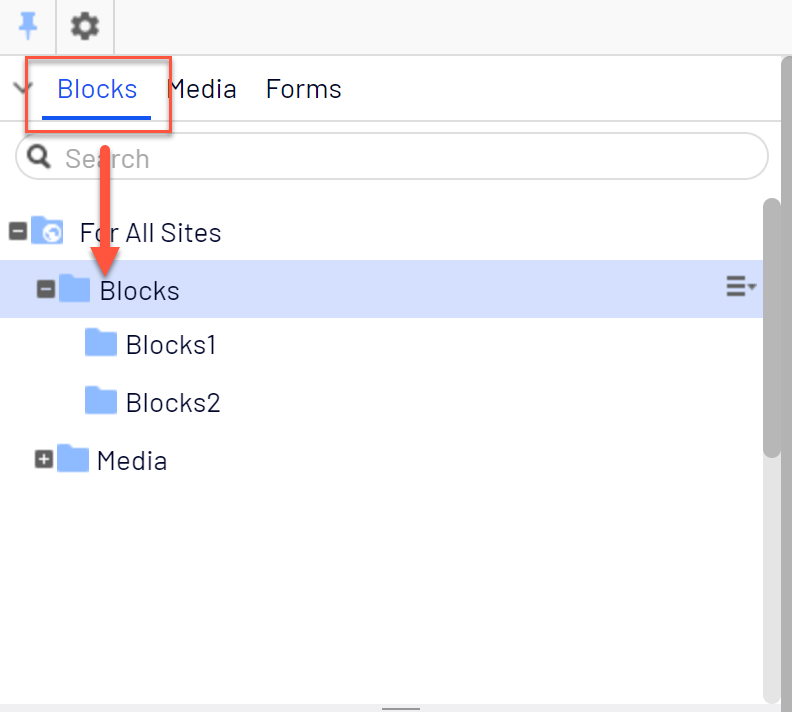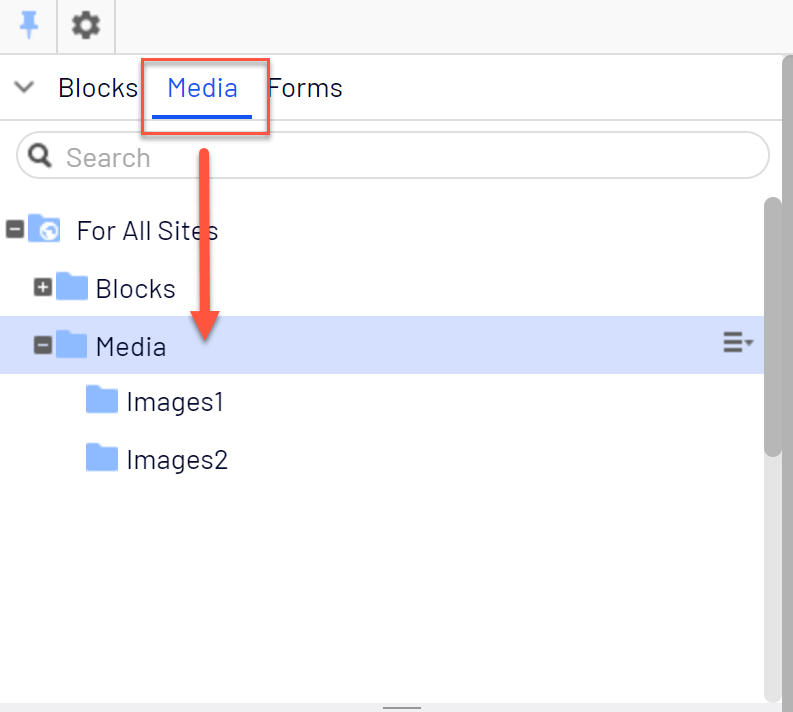 Best practices for organizing assets
Best practices for organizing assets
When organizing your assets, the top priority is to always follow the standards set by your organization, as this makes it easier for both yourself and other editors to find already uploaded assets. Following a standard lets editors search for assets, instead of having to browse for them. Make sure your standards are documented where all editors can access them.
If you are free to set your own standards, here are some tips on how to best organize your assets. Do the best you can from the start, with input from others as needed. But remember that you can modify how blocks and media files are organized in the future should the need arise. It will not be done without effort, but perhaps with less pain than you anticipate.
Where to store your assets?
It is critical that the folder structure is simple and intuitive so that editors can find what they are looking for.
Remember that the same structure is used for both blocks and media assets, so if you create a new folder under Blocks, the same folder is automatically added under Media; you can read more about that in the Folders topic. If you would like to have different structures for blocks and media files, you can work around the default behavior by creating two top-level folders, one for Blocks and one for Media. Then use the Blocks folder only for blocks and the Media folder only for media files.


The order of folders and the content in the folders in the assets pane is determined by their names. See How to name folders and assets? for tips on naming folders and assets.
Global or local folder
You can store assets in three containers, each can contain any numbers of folders. These containers are called For All Sites, For This Site, and For This Page (For This Block, if you are on a block and not a page). Read more about these containers in the Folders topic.
- Store your assets in a global folder (that is, For All Sites or For This Site) if they should be available for use in multiple places. Logos, icons, and teaser blocks are often used in several places and so are often stored in global folders.
- Store assets in a local folder (For This Page/For This Block) if they should only be used in one place. Images related to news, campaigns, events and so on are often just used once and can be stored in a local folder.
Access rights
The folder structure should be set up so it is possible to control who can create, update and delete assets. Access rights can be set on the folder structure and on specific users or user groups. But it is also possible for developers or admins to limit the types of blocks or assets editors can create, and which block types can be added to which page types.
Uploaded assets can either be automatically published or required to be reviewed and published separately from the upload process. See Publishing media for more information on this setting.
How to name folders and assets?
These naming guidelines apply to both folder names and names of individual assets, such as block names.
Use folder and asset names that clearly describe their content, such as "AlloyMeet_women_spring_campaign_2020.jpg". An image name such as "img_12345678_a.jpg" is not helpful for other editors.
Start off with general area folders and add sub folders with increasing levels of detail, for example, Products/Alloy Fashion/Campaigns/Womens/2-for-1/teaser_images.
Sorting folders and assets
Folders and assets are sorted in this order in the assets pane:
- Names starting with an underscore
- Numerically
- Alphabetically
This means that folder "_TeaserImages" is sorted first, followed by folders "1_Logos", "2_Images", "Images" and last "Logos".
Knowing how the folders are sorted helps you to organize assets in a folder structure based on folder names.
Grouping assets in folders
The grouping of assets in folders can follow different principles, or a combination of these principles. You have to work out what is best suited for your type of website, organization, and so on. Here are some examples:
- Group folders by page tree structure. If your page tree structure is based on the top-level pages for "Product A", "Product B", "Events" and "Contact us", mimic that structure in the assets pane.
- Group folders by usage. Another way of creating a structure for assets is by grouping them by their type of usage, for example, folders for “Campaigns”, “Banners”, “Buttons”, and “News”.
- Group folders by brand or product area. Group assets to folders by product areas, such as “Clothing”, “Shoes” or even product name level for scarves, ties, hats and so on. If you run an Optimizely solution with multiple sites and want to reuse assets between the sites, create brand folders under For All Sites.
- Grouping folders by language. You might prefer to distinguish assets by language to keep track of them, especially if you are running culture-specific campaigns with images. In this case, create an EN folder for all English campaign images, an FR folder for French assets, and so on.
- Grouping folders by access rights. If several editors are working with the content on the website, you might only have access rights to specific parts of the page tree. Therefore, you would want to have your own folders in the assets pane as well.
Keeping it clean
Organizing things is not only about adding things; it is also about keeping things up-to-date and removing things that are not used. Keep your assets fresh by having a routine for deleting or archiving unused assets.